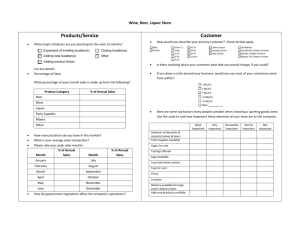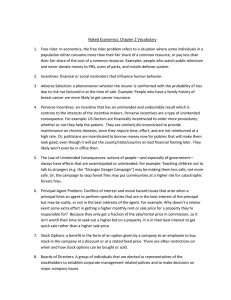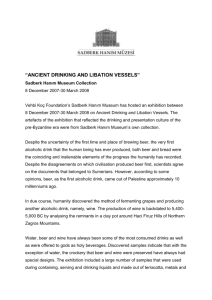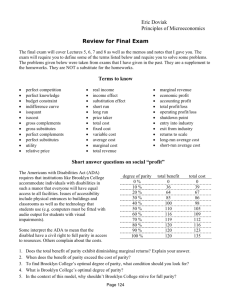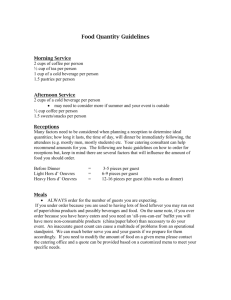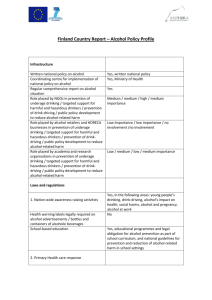Murielle
advertisement
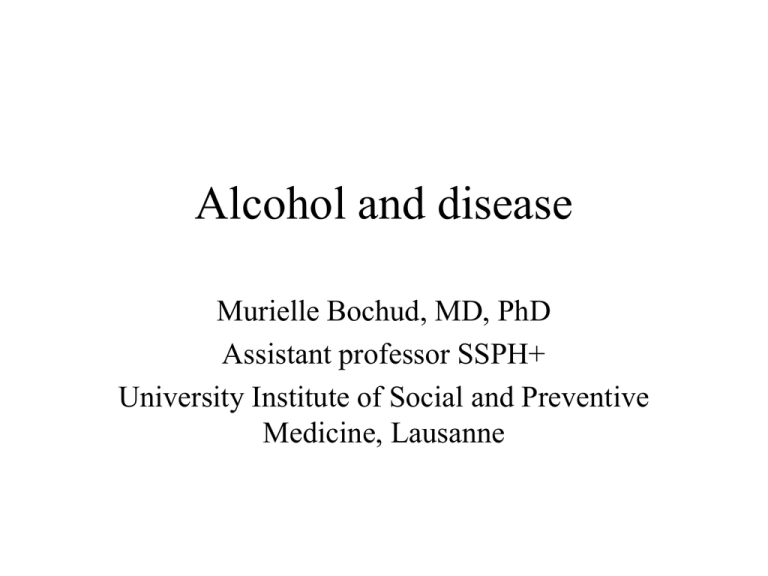
Alcohol and disease Murielle Bochud, MD, PhD Assistant professor SSPH+ University Institute of Social and Preventive Medicine, Lausanne How to assess alcohol intake? • • • • Questionnaire data using recall (not perfect) Amount in standard units Types of beverages (wine, beer, spirit) Transform standard units into gram of alcohol – 1 unit of wine (1 dl) = 10 g alcohol – 1 unit of beer (3 dl) = 12 g alcohol – 1 unit of spirits (4 cl) = 12 g alcohol Drinking categories In general, there is no significant health difference between individuals who consume less than 2 drinks daily and abstainers. Alcohol burden • Alcohol is one of the most important risk factors for burden of disease. • It explains about 7.6% of all death in men and 3.5% in women (Canada, 2001). • Alcohol can be a risk factor for certain disease and a protective factor for others: – Main causes of alcohol-attributable death are unintentional injuries, malignant neoplasms and digestive diseases. – Ischaemic heart disease is the biggest cause of death prevented by alcohol Ref: Rehm et al, Addiction 2006;101:373-384 Diseases associated with alcohol intake • Cancers (liver, mouth and oropharynx, laryngeal, oesophageal, breast, etc) • Type 2 diabetes • Neuropsychiatric conditions (alcohol abuse, alcohol psychosis, depression, epilepsy, etc) • Cardiovascular disease (hypertension, ischaemic heart disease, stroke, cardiomyopathy, arrhythmais, heart failure, etc) • Digestive diseases (gastritis, liver cirrhosis, acute and chronic pancreatitis, cholelithiasis) • Intentional (self-inflicted injuries, homocides, suicide, etc) and unintentional (car accidents, falls, fires, drowning, etc) injuries • Skin diseases: psoriasis Alcohol attributable fraction (AAF) Diseases Men Women Cancers 30.5 9.1 T2DM -4.9 -2.5 Neuropsychiatric conditions 84.7 56.6 Cardiovascular disease -5.0 -4.1 Digestive diseases 53.3 37.4 Unintentional injuries 31.1 16.2 Intentional injuries 19.6 16.4 The AAF is generally defined as the proportion of the disease(s) in the population that will disappear if alcohol is removed Ref: Rehm et al, Addiction 2006;101:373-384 Data from Canada The French paradox There is lower mortality in France with respect to other countries in relation to wine consumption Red wine, and its antioxidant polyphenols, is thought to be particularly protective against cardiovascular disease. St Léger et al, Lancet 1979;1:1017-1020 Could there be confounding factors in the association between wine and cardiovascular mortality? • Subjects who drink wine tend to be of a higher socioeconomic class, are more attentive to their health, and have fewer cardiovascular risk factors (Naimi et al, AmJ PrevMed 2005;28:369–373) • Socioeconomic class is a strong determinant of mortality Types of alcohol beverages Purchase of healthier food items is related to purchase of wine over beer. Odds ratios <1 were items purchased more commonly with wine. Odds ratios >1 indicate items purchased more commonly with beer. Johansen et al, BMJ 2006;332:519–522 J-shaped curve for the relation betwen alcohol and total mortality Meta-analysis 34 studies (men and women) 1’015’835 subjects 94’533 deaths Ref: Di Castelnuovo et al, Arch Intern Med. 2006;166:2437-2445 What could explain the protective role of moderate alcohol intake? • moderate alcohol has atheroprotective effect potential due to – – – – favourable changes in blood lipids better haemostatic profile reduced insulin resistance lower levels of systemic inflammatory To drink or not to drink, that is the question !

